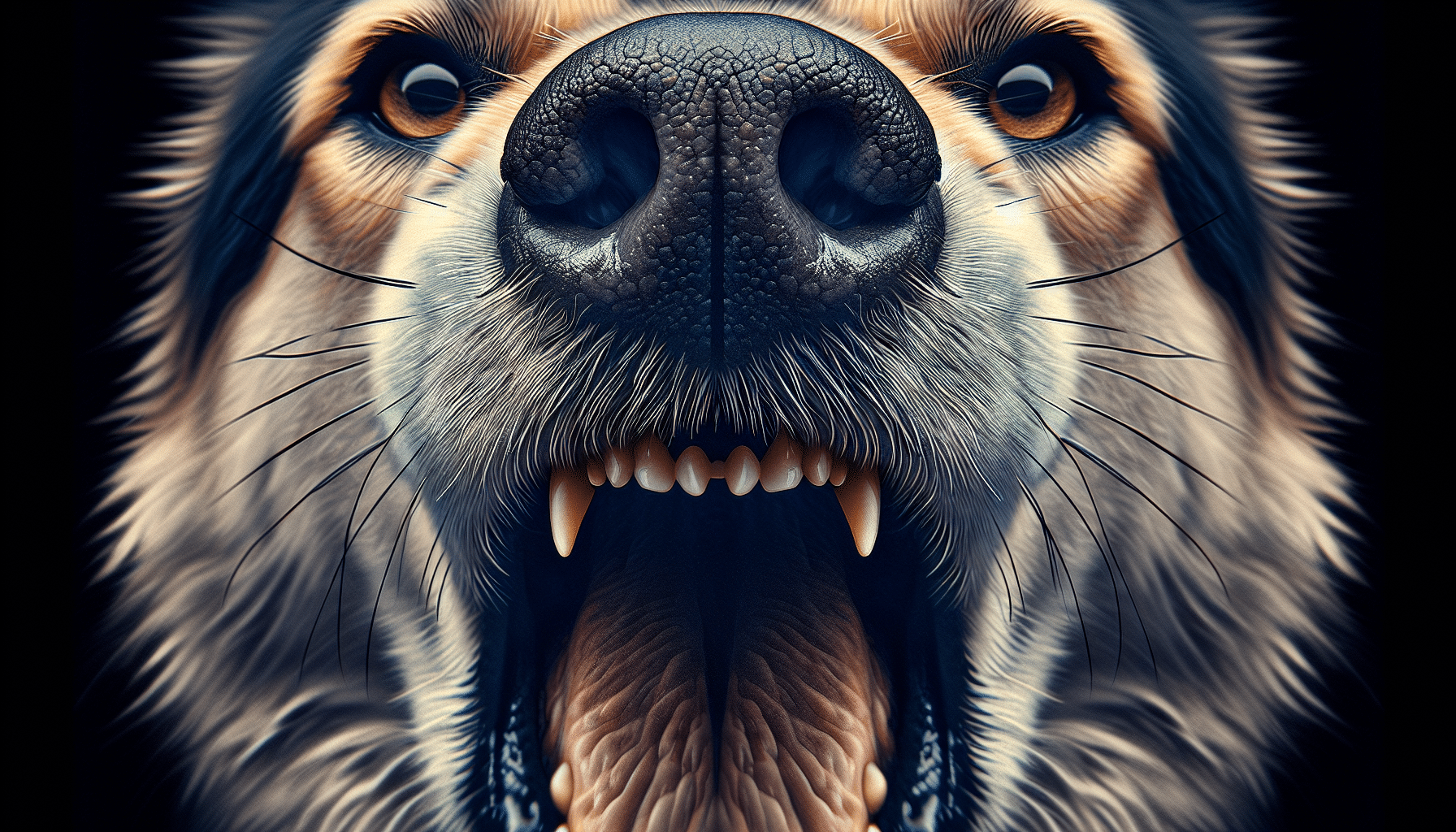In the fascinating world of canine communication, understanding and responding to a dog's growling can be both crucial and rewarding. With the "Mastering Dog Communication: Interpreting and Responding to Growling" online course, you will embark on a journey to decode the complex language of dogs, gaining valuable insights into their thoughts and emotions. This course will equip you with the knowledge and skills to navigate and effectively respond to their growling, creating a harmonious and trusting relationship between you and your furry companion. Get ready to dive into the realm of dog communication and discover a whole new level of connection with your four-legged friend.

This image is property of images.pexels.com.
Understanding Dog Communication
Dog communication is a complex and fascinating subject that every dog owner should strive to understand. By learning how to interpret your dog's behavior and vocalizations, you can build a stronger bond with your furry companion and ensure their well-being. In this article, we will explore the various aspects of dog communication, with a particular focus on growling. Understanding why dogs growl and how to interpret their growls can help prevent potential conflicts and create a harmonious living environment for both you and your canine friend.
Normal Dog Behavior
Before we delve into the intricacies of growling, let's first establish what constitutes normal dog behavior. Dogs are social animals, and just like humans, they have their ways of expressing themselves. Barking, wagging their tails, sniffing, and various body language cues are all part of a dog's communication repertoire. It is important to remember that growling is a natural behavior for dogs and should not be automatically perceived as a sign of aggression. Dogs may growl for various reasons, including fear, anxiety, frustration, or even excitement.
Why Dogs Growl
Growling is one of the primary ways dogs communicate their emotions to humans and other animals. While growling is commonly associated with aggression, it is crucial to understand that growling can stem from other emotions as well. Dogs may growl when they feel threatened, anxious, or uncomfortable in a particular situation. By growling, dogs are essentially expressing their discomfort and warning others to back off. It is essential to pay attention to the context in which the growling occurs and the accompanying body language cues to accurately interpret a dog's growl.
The Importance of Interpreting Growling
Interpreting a dog's growl is crucial for maintaining their safety as well as those around them. By understanding the underlying emotions behind a growl, you can take appropriate measures to defuse a potentially volatile situation. It is important to remember that ignoring or misinterpreting growling can lead to escalated aggression, putting everyone involved at risk. By promptly addressing a dog's discomfort, you can prevent undesirable outcomes and foster a trusting relationship with your furry friend.
Interpreting Dog Growling
To effectively interpret a dog's growling, several factors need to be considered. By paying attention to the type of growl, the context in which it occurs, as well as the accompanying body language cues, you can gain valuable insights into your dog's emotional state.
Types of Growls
Growling can manifest in different ways, each indicating a specific emotional state. A low, rumbling growl accompanied by a relaxed body posture may signify contentment or playfulness. On the other hand, a high-pitched, throaty growl coupled with stiff body language could indicate fear or aggression. It is essential to differentiate between these types of growls to accurately gauge your dog's emotions and respond accordingly.
Context of the Growl
Understanding the context in which a growl occurs is crucial for interpretation. Did the growling happen during a game or while your dog was eating? Was your dog approached by a stranger or another unfamiliar dog? By considering the circumstances surrounding the growl, you can better understand why your dog is expressing their discomfort. This knowledge can help you modify the environment or address the trigger to prevent similar situations in the future.
Body Language Cues
A dog's body language provides critical clues about their emotional state. When growling, dogs may exhibit signs of dominance, fear, or anxiety through their body posture. Puffed-up fur, raised hackles, a stiff tail, and a lowered head can signify aggression or fear. Conversely, a relaxed body posture, loose tail wagging, and a soft expression indicate contentment or playfulness. By observing your dog's body language when they growl, you can gain insight into their emotional state and respond accordingly.
Facial Expressions
Just like humans, dogs convey emotions through their facial expressions. A dog's eyes, ears, and mouth can provide valuable information about their emotional state. When growling, a dog's eyes may appear tense or wide, showing whites of the eyes. Their ears may be pinned back or pulled forward in an alert position. Additionally, baring teeth, wrinkling the nose, or curling the lips can accompany a growl. Understanding these facial expressions can help you gauge your dog's emotional state more accurately.
Vocalizations and Pitch
Apart from growling, dogs may produce various vocalizations that communicate their emotions. Whining, howling, barking, or even yelping can accompany a growl. Additionally, the pitch of the growl itself can contain valuable information. Low-pitched growls often indicate a threat or aggression, while high-pitched growls may indicate fear or anxiety. By listening to the quality and pitch of your dog's growl, you can gain further insights into their emotional state.

This image is property of images.pexels.com.
Responding to Dog Growling
When faced with a growling dog, it is essential to respond in a calm, assertive, and safe manner. By taking the following steps, you can effectively address your dog's discomfort while ensuring the well-being of everyone involved.
Assessing the Situation
In the heat of the moment, it is crucial to assess the situation and determine the level of threat. Is your dog growling due to fear, aggression, or another trigger? Are there any immediate dangers or potential harm? By evaluating the situation, you can make informed decisions regarding the appropriate response and take necessary precautions to prevent any escalation.
Creating a Safe Environment
If your dog is growling due to fear or anxiety, creating a safe and reassuring environment should be your top priority. Remove any potential triggers, such as loud noises or unfamiliar people or animals, from your dog's surroundings. Ensure that your dog has a quiet space of their own where they can retreat to and feel safe. Taking these steps can help alleviate their anxiety and reduce the need for growling as a defense mechanism.
Seeking Professional Help
If your dog's growling is a persistent issue or escalates into aggressive behavior, it may be necessary to seek professional help. A qualified dog behaviorist or trainer can provide expert guidance and develop a tailored behavior modification plan for your dog. They can help you address the underlying causes of the growling and work towards eliminating or managing the behavior effectively. Remember, seeking professional help is not a sign of failure but rather a proactive step towards improving your dog's well-being.
Positive Reinforcement Training
Positive reinforcement training is an effective tool for addressing and modifying growling behavior. By rewarding desired behaviors, such as calmness or appropriate responses, you can reinforce positive associations with specific situations. This approach helps your dog understand that growling is unnecessary and that alternative behaviors lead to more favorable outcomes. However, it is crucial to consult with a professional trainer to ensure that positive reinforcement techniques are implemented correctly and safely.

This image is property of images.pexels.com.
Preventing and Managing Growling Behavior
Prevention and management are key when it comes to addressing growling behavior in dogs. By understanding the triggers, providing appropriate socialization and desensitization, conducting body handling exercises, managing resource guarding, and addressing fear and anxiety, you can significantly reduce the instances of growling.
Understanding Triggers
Identifying and understanding the triggers that cause your dog to growl is a vital step in preventing and managing growling behavior. Triggers can vary significantly from one dog to another and may include loud noises, unfamiliar people or animals, or specific environments. By identifying these triggers, you can modify your dog's environment or take necessary steps to desensitize them, thereby reducing the instances of growling.
Socialization and Desensitization
Proper socialization from an early age can significantly contribute to preventing growling behavior. Exposing your dog to various stimuli, such as different people, animals, and environments, helps them develop confidence and adaptability. Additionally, desensitization exercises aim to gradually expose your dog to the triggers that cause growling, allowing them to build positive associations and reduce their anxiety or fear response.
Body Handling Exercises
Accustoming your dog to various types of body handling, such as being touched, groomed, or having their paws examined, is essential for preventing growling behavior. Gradual desensitization to body handling exercises can help your dog feel more comfortable with being touched and reduce the likelihood of growling in response to these activities. These exercises should always be carried out gently, patiently, and in a positive, non-threatening manner.
Managing Resource Guarding
Resource guarding refers to a dog's protective behavior towards their possessions, such as food, toys, or sleeping areas. Growling is a common response when a dog feels threatened or believes that their resources are at risk. To manage resource guarding behavior, it is important to establish clear boundaries, teach a "drop it" or "leave it" command, and implement techniques that encourage your dog to associate positive experiences with others being in proximity to their resources.
Dealing with Fear and Anxiety
Fear and anxiety can contribute to a dog's growling behavior. It is essential to address these underlying emotions to effectively manage and prevent growling. Techniques such as desensitization, counter-conditioning, and the use of anxiety-reducing aids can be employed to help your dog feel more comfortable and secure. However, severe cases of fear or anxiety may require professional guidance and, in some instances, medication prescribed by a veterinarian.

Common Misconceptions About Growling
There are several misconceptions surrounding dog growling that can lead to misunderstandings and potential harm. By dispelling these misconceptions, we can promote a more informed and compassionate approach to dog communication.
Aggression versus Fear
It is vital to differentiate between aggression and fear when interpreting a dog's growling. While growling can be accompanied by aggressive behavior, it is often a symptom of fear or anxiety. By recognizing and addressing the underlying emotions, we can adopt strategies that focus on promoting a sense of safety and reducing fear-based behaviors.
Training Techniques
Outdated training techniques that rely on punishment and dominance can exacerbate growling behavior. These methods can increase a dog's fear or anxiety and escalate their need to express themselves through growling. Positive reinforcement training, emphasizing reward-based approaches and clear communication, is a more effective and humane method for modifying growling behavior.
Dominance Theory
The dominance theory suggests that growling is a sign of a dog asserting dominance over their owner or others. However, current scientific research indicates that dominance-based interpretations of dog behavior are oversimplified and often misleading. Growling is primarily a communication tool employed by dogs to express their discomfort and should be addressed accordingly, without focusing on dominance-related notions.
Punishment-Based Methods
Punishment-based methods, such as yelling, physical corrections, or shock collars, are counterproductive in addressing growling behavior. These techniques can cause further stress, fear, or anxiety, and may result in increased aggression. Positive reinforcement training, along with appropriate behavior modification strategies, is a far more humane and effective approach to tackling growling behavior in dogs.
In conclusion, understanding dog communication, especially growling, is essential for building a strong and harmonious relationship with your canine companion. By interpreting growling and responding appropriately, you can ensure your dog's well-being and prevent potentially dangerous situations. By preventing and managing growling behavior through socialization, desensitization, positive reinforcement training, and addressing underlying emotions, you can promote a safe and enjoyable environment for both you and your furry friend. Let's embrace a compassionate and informed approach to dog communication for happier and healthier four-legged family members.



